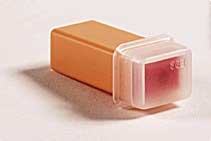Home » Home Health Care Products & Supplies » Understanding Type 1 Diabetes » Understanding Type 1 Diabetes
Understanding Type 1 Diabetes

Surgilance One Step Safety Lancets Low Flow Grey 1.8 mm Depth
Retail Price: $37.29
Your Price: $24.03
 Unit: 100/box
Unit: 100/box
Type 1 diabetes has historically been known as juvenile diabetes since it is often diagnosed very early in a child's life, often in adolescence if not before. Unlike other forms of diabetes the pancreas does not produce any insulin which means that the symptoms may be present at birth. For some people injury, infection or disease may also stop the pancreas functioning, resulting in a diagnosis of Type 1 diabetes later in life.
The number of people diagnosed with Type 1 diabetes is about 5% of all diabetics. These individuals will need to have insulin therapy as a lifelong way to control their blood sugar levels. Regular blood sugar testing as well as healthy diet and exercise will also be essential in overall good health. With new advancements in treatment there are ever increasing options for individuals diagnosed with Type 1 diabetes.
Cause And Risk Factors Of Type 1 Diabetes:
For many individuals diagnosed with Type 1 diabetes the specific cause of the condition is not known. However, there is increasing research that indicates that it may be a form of an autoimmune disorder. This means that the body actually attacks the part of the pancreas, the Islet cells, mistaking them for harmful cells. This is also the case when children and adults are exposed to specific viruses that trigger the same immune response in the body. These viruses can include the mumps virus, coxsackievirus, Epstein-Barr or the cytomegalovirus. All are common in children and parents may not even be aware that the child has been exposed to the virus.
Genetic factors also contribute to the diagnosis of Type 1 diabetes. A family history of diabetes, particularly Type 1 is often found in children and adolescents that develop the condition without exposure to a virus. However other factors such as where you live may also impact your statistical probability of having this type of condition. Research reported by the Mayo Clinic shows that people living in Scandinavian countries and those living farthest from the equator have the highest rates of Type 1 diabetes.
Other factors that may contribute to the development of Type 1 diabetes includes a poor diet for an infant, low levels of Vitamin D, nitrates in food or water as well as health issues in infants immediately after birth. Children born to mothers with preeclampsia, hypertension during pregnancy, or mothers that are under the age of 25 at the time of pregnancy are at greater risk.
Treatment For Type 1 Diabetes:
Even though current medicine does not provide a cure for Type 1 diabetes new advances in providing insulin and monitoring blood sugar levels allows individuals with the condition to live very normal lives. Unlike Type 2 diabetes those diagnosed with Type 1 will need to have insulin therapy in the form of rapid acting and long acting insulin. These can include insulin pumps, oral medications as well as insulin injections which are completed by the individual as required. Long acting insulin is typically used with rapid acting used only as needed to lower blood sugar levels quickly and effectively.
Using the insulin pump allows a small computer, about the size of a cell phone, to automatically provide insulin to your body based on your individual requirements. You are also able to program information into the pump to allow the pump to supply the correct amount of insulin as you are enjoying a meal or a snack. A small reservoir of insulin is also worn on the body and a very small tube delivers the required amount of insulin just under the skin of the abdominal area.
Careful monitoring of carbohydrates and sugars is essential in the diet. A healthy diet combined with routine exercise and a healthy lifestyle will also provide options for controlling blood sugar and preventing secondary health issues from developing.
















